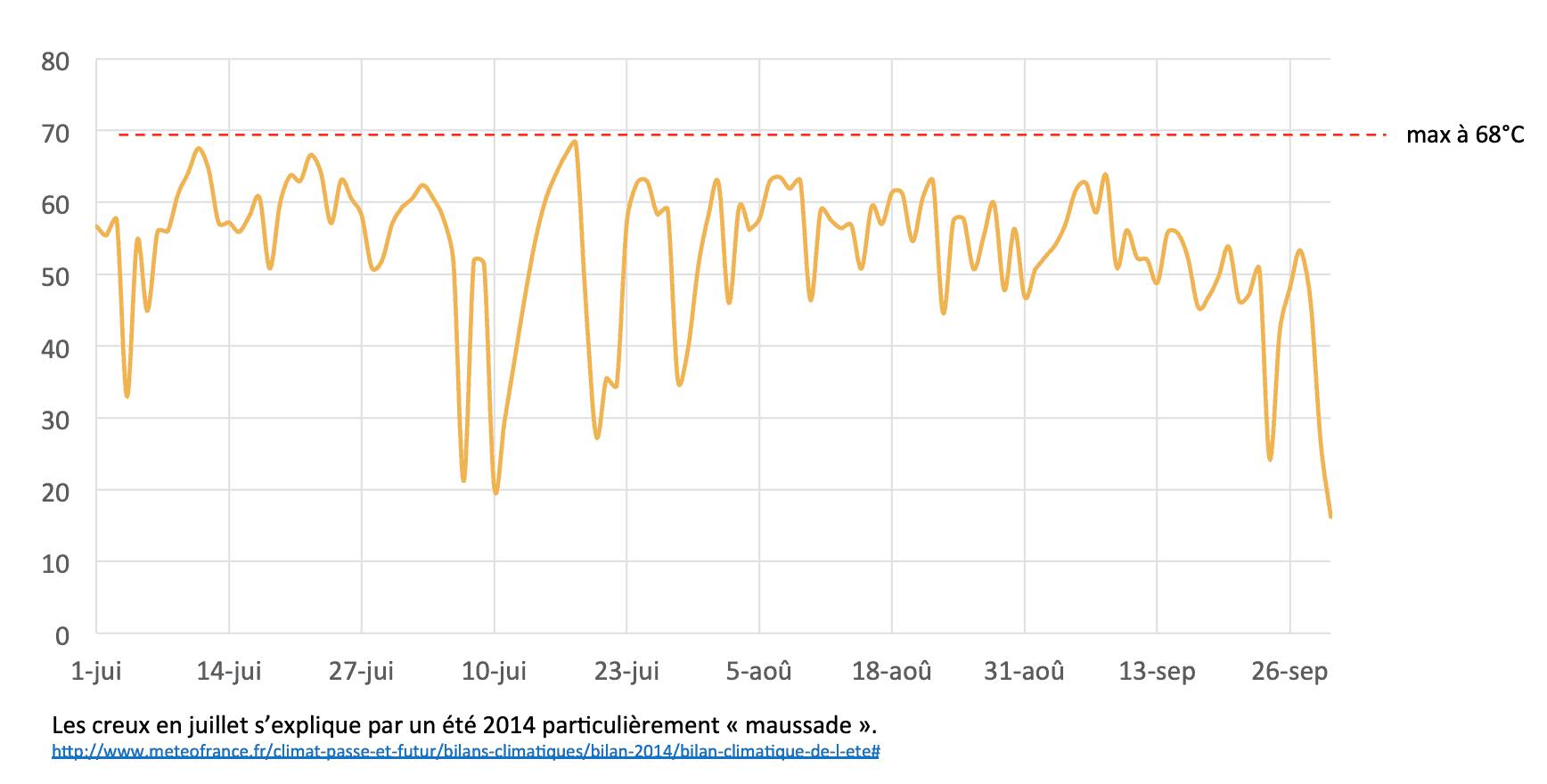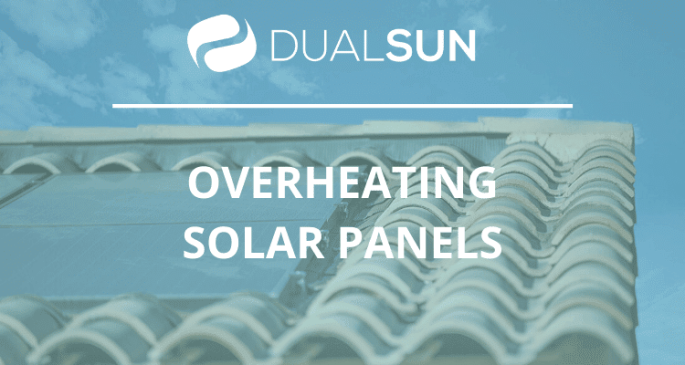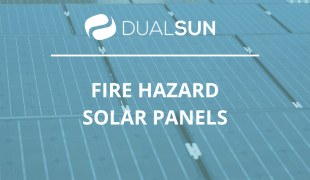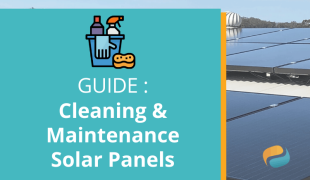Come summertime, watch out for the risk of overheating solar panels! Their energy output peaks from June to September, which marks their period of highest efficiency.
But this time period is also about going away on holiday, thus leaving the home empty and unsupervised.
If your home is equipped with solar panels, you might be wondering what happens if there is no one around to draw hot water. With no thermal demand, are the panels likely to overheat and suffer damage?
Photovoltaic solar panels bear no risk because they do not have hot water, unlike thermal panels which are at risk of overheating for this very reason. As regards the hybrid panels, they are protected from this risk due to their stagnation temperature. Each will be explained in more detail in the lines that follow.
—
SUMMARY
- Overheating of thermal solar panels
- Overheating of photovoltaic solar panels
- The stagnation temperature of a hybrid solar panel
- Delving deeper: laboratory testing to determine the stagnation temperature of the DualSun hybrid panel
Overheating of thermal solar panels
At what temperature do solar collectors begin to overheat? Conventional thermal panels reach very high temperatures (up to 150-200°C).
When the house is uninhabited, there is also no draw on domestic hot water, such as for showers. This means that the thermal panels are not automatically cooled down, which makes them susceptible to the following problems in certain installations:
- Considerable mechanical stress on plumbing and joints
- Clogging of the circuit
In practical terms, the heat transfer fluid inside the panel can reach boiling point and vaporize. This creates an overpressure which is mitigated by the dilatation of the expansion tank. If the expansion tank is improperly sized and does not have sufficient capacity to compensate for the gas generated by the boiling heat-transfer fluid, it can lead to overpressure and cause the installation to break down. This is because gas expands more than liquid when heated.
In this case, a solar panel installer will need to intervene in order to drain,recycle, and replace the glycol fluid.
In addition to causing a system break-down, overheating may also damage the mechanical elements of the solar installation.
Overheating of photovoltaic solar panels
Photovoltaic solar panels do not bear the risk of overheating because they do not contain circulating water and they simply evacuate heat from each side of the panel.
In this regard, it is worth noting that photovoltaic panels lose efficiency as soon as their surface temperature reaches 25°C. Therefore, a standard photovoltaic panel produces 80% heat for just 20% of generated electricity.
Therefore, overheating does not so much present a risk as a disadvantage for a photovoltaic panel. The higher the temperature, the lower the photovoltaic output.
This is where hybrid solar technology comes in handy by cooling the photovoltaic panel with the help of circulating water.
For more on this topic, read the following article: how much does photovoltaic output increase as a result of cooling?
The stagnation temperature of a hybrid solar panel
As we have seen, the overheating of thermal solar panels is not only dangerous for the installation but also costly for the owner.
How can overheating of the panel be avoided in this case?
Let us take the example of a hybrid solar panel such as DualSun. The stagnation temperature of a hybrid panel gives it considerable technical advantage over conventional thermal solar panels. The stagnation temperature refers to the maximum temperature reached by the collector.
DualSun panels have a moderate stagnation temperature that does not exceed 70°C when not embedded.
This feature is the result of technical choices made during the design stage of the hybrid solar collector.
A single glass pane to avoid overheating
The DualSun hybrid solar panel is not designed to conserve heat. As such, it does not accumulate heat, but merely collects it.
The front side of the hybrid panel does not create a greenhouse effect because it is not composed of secondary glazing like the thermal solar panel is. The DualSun has one glass pane only, leaving no room for air between the glass pane and the heat-collecting part of the panel.
This technical choice confers added security and ease-of-use to the DualSun solar installation. Moreover, it definitively rules out the issue of overheating.
Maintained photovoltaic output
The lack of overheating makes it very easy to maintain a DualSun installation. The simplicity and convenience of its upkeep benefits installers and owners alike.
Furthermore, the stagnation temperature has no impact on the photovoltaic output. Conventional photovoltaic panels reach temperatures of 75 to 80°C, whereas our Spring solar panel is more efficient due to its maximum temperature of 70°C.
Also worth noting is that in terms of its components, a photovoltaic solar panel is designed to withstand 100°C even if it does not necessarily reach this temperature.
For more in-depth information, read the complete guide to solar panel efficiency and output.
Delving deeper: laboratory testing to determine the stagnation temperature of the Dualsun hybrid panel
The stagnation temperature of the DualSun solar panel was measured as part of the Solar Keymark certification process at the TÜV Rheinland laboratory in Germany.
Measuring conditions:
- Irradiation: 1.000 W/m2
- Ambient temperature: 30°C.
DualSun panels were tested for resistance to high temperatures at the CESP, a French testing and calibration laboratory in the city of Perpignan. The CESP recorded a stagnation temperature of 72.67°C in DualSun panels.
The stagnation temperature in real-life installations

The above graph displays the evolution of the maximum temperature in a Dualsun installation in the southern city of Marseille in July, August, and September. Noteworthy is that the maximum temperature does not exceed 70°C during the hottest period in August.
We asked Transénergie, the French engineering consultancy firm to conduct highly precise measurements on the thermal performance of the Dualsun hybrid panel. The measurements were conducted on two installations located in the region of Lyon, France and the results also confirmed that the temperature of the panels never exceeds 70°C, not even in the summer.
What about regions with higher temperatures than the ones tested for?
Dualsun hybrid panels do not overheat even in extreme conditions. When tested for the Southern Algerian desert, which recorded 1,056W/m2 and 42°C, the maximum stagnation temperature reached by our Dualsun Spring panel was 93°C. So the heat transfer fluid does not reach boiling point.
The moderate stagnation temperature of the hybrid panel is therefore genuinely advantageous. Moreover, in case of a power outage and a non-functioning pump, the panel is safe thanks to its natural regulation system!
Now that you know all that there is to know about solar panel overheating, we invite you to consult the following article: Do solar panels pose a fire hazard?





Aucun commentaire.
Leave a comment
Votre adresse e-mail ne sera pas publiée. Les champs obligatoires sont indiqués avec *